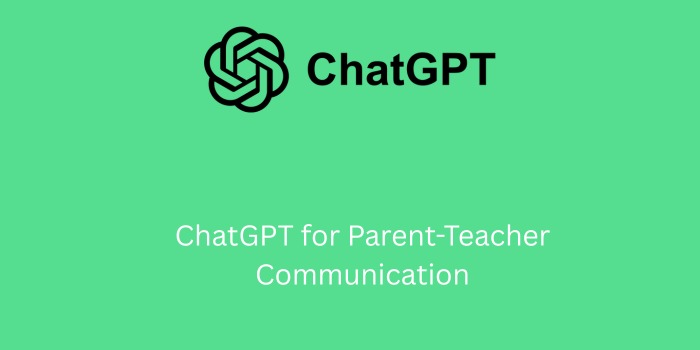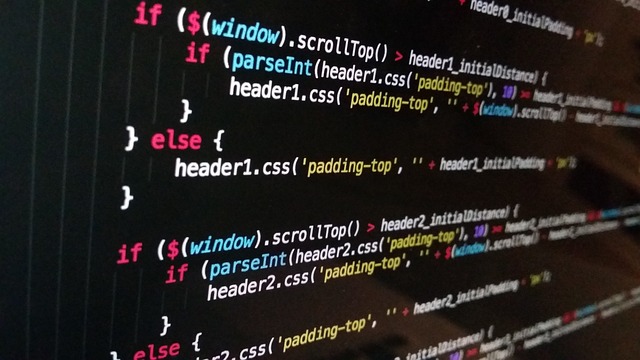Parent-teacher communication plays a vital role in student success. As educational technology evolves, tools like ChatGPT are revolutionizing how educators and parents stay connected. In this comprehensive guide, we explore how ChatGPT for parent-teacher communication can enhance dialogue, streamline updates, and build stronger school communities.
Why Parent-Teacher Communication Matters
Effective communication between parents and teachers boosts student engagement, improves academic performance, and promotes a positive learning environment. Unfortunately, time constraints, language barriers, and inconsistent messaging can make this communication challenging. This is where AI can help.
What is ChatGPT?
ChatGPT is a cutting-edge AI language model developed by OpenAI. It is designed to generate text that closely resembles human writing, based on the prompts or questions it receives from users.
This ability makes ChatGPT a valuable assistant for educators looking to improve communication, save time, and enhance clarity in their messages. It can assist in writing formal emails, creating announcements, and responding to frequently asked questions.
In school settings, ChatGPT offers a wide variety of applications. From drafting newsletters to preparing individualized student updates, it enables teachers to engage with parents more effectively and efficiently.
Benefits of Using ChatGPT for Parent-Teacher Communication
ChatGPT brings a range of advantages to modern parent-teacher interactions, streamlining communication while enhancing clarity and engagement. By integrating this AI tool into daily workflows, educators can manage their responsibilities more efficiently and focus more on student development. Below are some key benefits of using ChatGPT in a school communication setting:
- Time-saving: Quickly draft messages, newsletters, or reports.
- Consistency: Ensure standardized language and tone.
- Accessibility: Translate messages into multiple languages.
- Engagement: Personalize communication to foster stronger relationships.
- Documentation: Maintain records of interactions and reports.
Practical Uses of ChatGPT in Parent-Teacher Communication
ChatGPT can be a valuable asset in daily school communication tasks, offering practical solutions that save time and improve the quality of parent engagement. From composing routine updates to generating detailed reports, this AI tool helps teachers communicate more effectively without the added burden of writing from scratch.
It also supports personalized messaging and multilingual capabilities, making it easier to connect with diverse families. The following examples highlight how educators can apply ChatGPT in real-world scenarios.
1. Writing Weekly or Monthly Newsletters
Creating consistent and engaging school newsletters can be time-consuming for teachers. With ChatGPT, educators can quickly generate well-structured, informative newsletters that highlight key classroom activities, upcoming events, and important announcements. This helps maintain regular communication with parents while saving valuable time.
Using ChatGPT for parent-teacher communication, teachers can tailor content to specific grades or student groups. The AI tool ensures clarity and a professional tone, making newsletters more effective and easy to understand for all families.
ChatGPT also allows educators to personalize each message and even translate newsletters into multiple languages, increasing accessibility and improving parental engagement across diverse school communities.
2. Drafting Progress Reports
Creating student progress reports can be time-consuming, especially when aiming for clear, personalized, and professional communication. With ChatGPT, teachers can quickly generate individualized progress summaries that reflect each student’s academic performance, strengths, and areas for improvement.
Using ChatGPT for parent-teacher communication allows educators to maintain consistency while saving valuable time. The AI can help structure the report, suggest appropriate wording, and even adapt the tone based on grade level or audience.
By streamlining the process, ChatGPT empowers teachers to focus more on student support while delivering accurate, well-crafted reports that enhance school-home communication.
3. Creating Parent Meeting Summaries
After each parent-teacher conference, it’s essential to provide a clear and concise summary of what was discussed. Using ChatGPT for parent-teacher communication makes this process easier by helping generate well-structured meeting summaries that highlight key points, concerns, and agreements.
These AI-generated summaries ensure both parents and teachers are aligned on action items, goals, and next steps. They serve as documentation that can be referenced later, reducing confusion and improving follow-through.
Additionally, ChatGPT can personalize each summary and even translate it into different languages, making communication more inclusive and effective across diverse school communities.
4. Translation Support
ChatGPT supports a wide range of languages, making it a valuable tool for breaking down language barriers in parent-teacher communication. With AI-generated translations, teachers can easily connect with non-English-speaking families.
This feature ensures that important updates, student reports, and announcements are accessible to all parents, regardless of their native language. It helps promote inclusivity and builds trust within diverse school communities.
Using ChatGPT for multilingual communication enhances clarity, reduces misunderstandings, and fosters stronger parent-school engagement through personalized, translated messages.
5. Answering Common Parent Questions
One of the most effective uses of ChatGPT for parent-teacher communication is creating a helpful FAQ sheet. Parents often have recurring questions about classroom procedures, grading, attendance, or school policies.
With ChatGPT, teachers can quickly generate clear and consistent answers to these common inquiries. This not only saves time but also ensures that all families receive the same information in a professional tone.
These FAQ documents can be shared via email, school websites, or printed newsletters to improve parent engagement and streamline communication.
6. Behavior and Attendance Updates
Communicating behavior and attendance issues to parents can be challenging, especially when emotions are involved. With ChatGPT for parent-teacher communication, educators can generate messages that are clear, respectful, and focused on solutions. This helps maintain professionalism and avoid misunderstandings.
ChatGPT allows teachers to craft personalized updates that reflect a student’s situation accurately. Whether it’s a missed assignment, frequent tardiness, or classroom disruptions, AI-generated messages can be tailored to express concern while reinforcing the importance of collaboration between home and school.
Additionally, ChatGPT supports consistency across all parent communications. It helps ensure that every message is aligned with school policies and delivered in a professional tone, while also offering translation features to bridge language gaps. This strengthens trust and transparency in parent-teacher relationships.
7. Emergency Communication Templates
In urgent situations, having well-prepared communication is critical. ChatGPT for parent-teacher communication can assist educators in drafting clear, calm, and informative messages before emergencies occur. This ensures that schools can respond quickly and effectively during crises, such as weather alerts, lockdowns, or unexpected closures.
Using ChatGPT, schools can create a library of emergency communication templates tailored for different scenarios. These templates can then be easily customized and deployed, saving precious time when immediate action is needed.
By streamlining emergency updates, ChatGPT enhances school communication and helps maintain trust with families during high-stress situations.
How to Use ChatGPT for Communication Tasks
- Login to ChatGPT or another AI writing tool.
- Provide a clear prompt. For example: “Write a weekly classroom update for parents of 5th graders about math activities.”
- Review and edit the response for personalization and tone.
- Copy and paste into your school’s communication platform or email tool.
Once the message is generated, take a moment to review and refine it to ensure that it aligns with your school’s communication style and meets the needs of the parents. Personalizing the content will help strengthen the connection with parents and ensure the message resonates. ChatGPT can save time and effort, but human oversight ensures the final communication is effective and appropriate for your audience.
Best Practices for Using AI in School Communication
When using AI tools like ChatGPT in school communication, it’s essential to balance efficiency with empathy. While AI can assist in generating quick drafts and automating routine tasks, human oversight remains crucial for maintaining the tone and context of sensitive topics. By following best practices, educators can ensure that AI enhances communication without compromising the quality of interaction.
Here are some key guidelines to keep in mind:
- Always personalize: Avoid generic messaging by adding specific student names, goals, and achievements.
- Maintain privacy: Don’t include sensitive information when using AI tools.
- Proofread: Check grammar, tone, and clarity before sending messages.
- Stay professional: Use ChatGPT as a guide, not a replacement for human empathy and insight.
Limitations and Ethical Considerations
While ChatGPT is an incredibly powerful tool for school communication, it’s important to recognize its limitations. Teachers should avoid over-relying on AI for sensitive or complex issues that require deep emotional understanding. ChatGPT for parent-teacher communication is great for routine updates but not for delicate topics.
AI lacks the emotional intelligence that human educators bring to nuanced communication. Teachers must ensure that AI-generated messages maintain empathy and clarity.
Always validate the information produced by AI and ensure it aligns with school communication policies, safeguarding privacy and accuracy
Real-World Examples
Schools worldwide are increasingly integrating AI tools like ChatGPT to improve communication between teachers and parents. By using AI for parent-teacher communication, educators can streamline messaging while saving time and effort.
For example, a district in California adopted AI-generated newsletters for weekly updates on school events, academic progress, and classroom activities. This initiative led to a remarkable 40% increase in parent engagement, demonstrating the effectiveness of AI tools in keeping parents informed and involved.
Another teacher utilized ChatGPT to translate messages for ESL families. By breaking down language barriers, this teacher was able to foster stronger relationships and trust with non-English-speaking parents, making communication more inclusive and accessible.
Moreover, some schools are using ChatGPT to automate responses to common parent inquiries. This has allowed for quicker replies, reducing the administrative burden on teachers while maintaining personalized communication.
As AI continues to evolve, more schools are expected to leverage ChatGPT to enhance parent-teacher communication and engagement in innovative ways.
Future of AI in Education Communication
AI will undoubtedly continue to reshape how educators communicate with students and parents. In the future, we can expect even deeper integrations of AI with school platforms, allowing for seamless communication between teachers, students, and families.
Voice assistants could play a larger role in meetings, helping teachers schedule appointments or answer questions in real-time. Additionally, automated scheduling tools powered by AI will simplify the process of arranging conferences or events.
However, while these advancements are exciting, the focus must remain on enhancing—rather than replacing—the vital human connection in education.
ChatGPT for parent-teacher communication can support these advancements, offering valuable tools without sacrificing the empathy that is essential in educational relationships.
Ultimately, AI will serve as a complement to, rather than a substitute for, the personal touch that educators bring to their roles.
Conclusion
Using ChatGPT for parent-teacher communication offers a smart, efficient, and scalable way to improve engagement, clarity, and trust. With the right practices and ethical use, educators can unlock the full potential of AI for school communication. Whether drafting a weekly update or translating a report, ChatGPT can be your reliable assistant in bridging the home-school gap.






